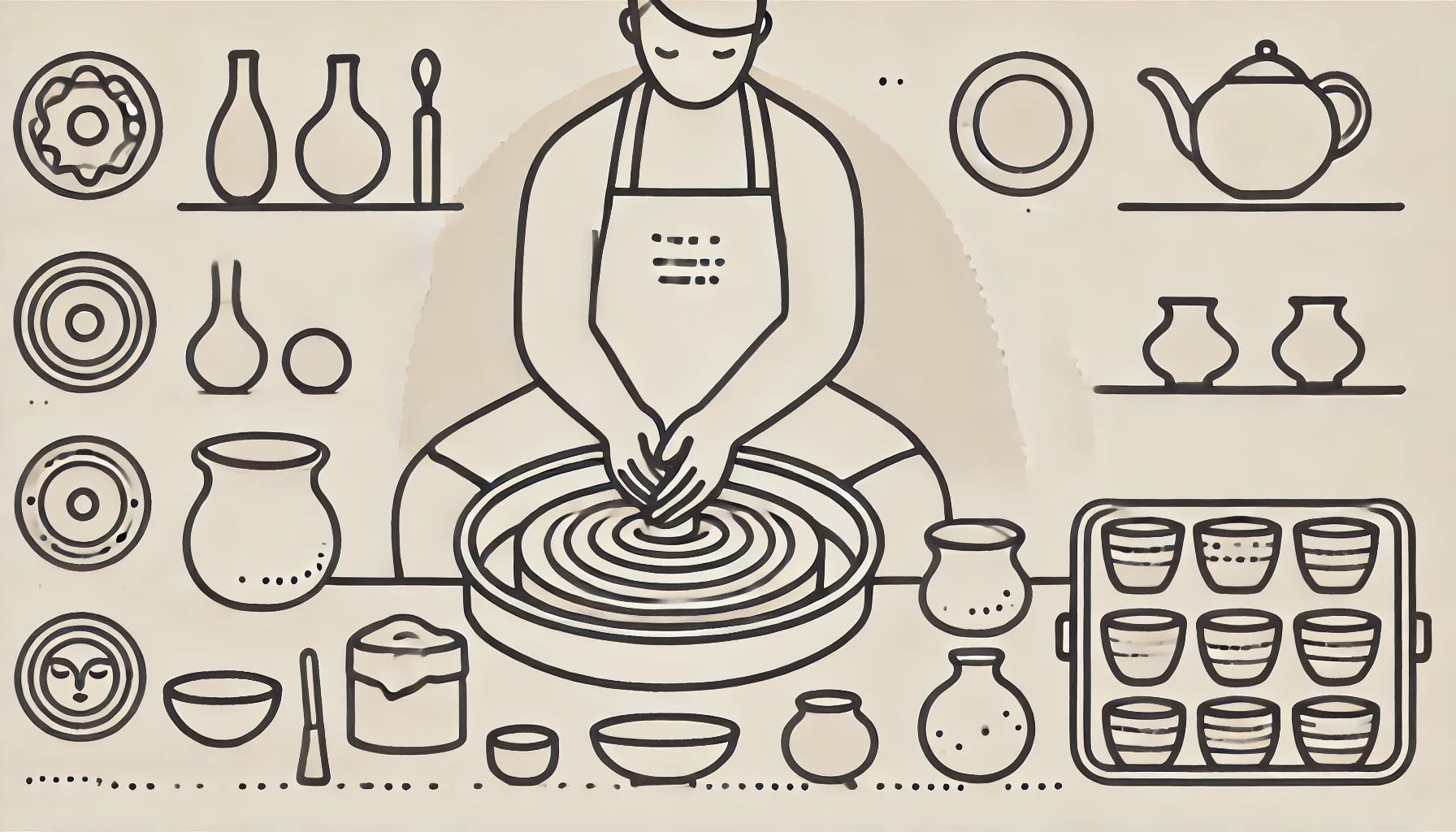Pottery is an ancient and beautiful art form that transforms simple clay into functional and decorative objects. Whether you’re a beginner or looking to refine your skills, this guide will walk you through the essential techniques and processes of pottery, from preparing clay to glazing and firing your creations.
The Joy of Pottery
Pottery offers numerous benefits:
- Creativity: It allows for artistic expression through shapes, designs, and glazes.
- Mindfulness: The process of working with clay is meditative and helps reduce stress.
- Functionality: You can create useful items like bowls, mugs, and vases.
- Connection to History: Pottery is one of the oldest human crafts, connecting you to a long tradition of artisans.
Getting Started
Essential Tools and Materials
To begin your pottery journey, you’ll need some basic tools and materials:
- Clay: Different types include earthenware, stoneware, and porcelain. Choose based on your project and skill level.
- Pottery Wheel: Used for shaping clay into symmetrical forms.
- Hand Tools: Includes rib tools, needle tools, and wire cutters for shaping and trimming.
- Kiln: For firing finished pieces. If you don’t have access to a kiln, look for community studios.
- Glazes: Used to decorate and waterproof your pottery.
Setting Up Your Workspace
Create a dedicated space for pottery that is well-ventilated and easy to clean. Use a sturdy table and a comfortable chair for hand-building, and ensure your pottery wheel is at the correct height.
Pottery Techniques
Hand-Building
Hand-building is a versatile technique that doesn’t require a pottery wheel. Methods include:
- Pinching: Create pots by pinching and shaping the clay with your fingers.
- Coiling: Roll out long coils of clay and stack them to build up walls.
- Slab Building: Roll out flat slabs of clay and cut them into shapes to assemble.
Wheel Throwing
Wheel throwing is the process of shaping clay on a rotating wheel. Basic steps include:
- Centering: Position the clay on the wheel and center it by applying pressure with your hands.
- Opening: Create an opening in the center of the clay and widen it to form the base.
- Pulling: Pull up the walls of the clay to create height and shape.
- Trimming: Once the piece is leather-hard, trim the bottom to refine the shape and remove excess clay.
Drying and Firing
Drying
Allow your pottery to dry slowly and evenly to prevent cracks. Covering pieces with plastic can help control the drying rate.
Bisque Firing
The first firing, called bisque firing, removes moisture and hardens the clay. Fire your pieces in a kiln at a low temperature (around 1832°F or 1000°C).
Glazing
After bisque firing, apply glaze to your pieces. Glazing techniques include dipping, brushing, and spraying. Allow the glaze to dry before the final firing.
Glaze Firing
The second firing, called glaze firing, melts the glaze to form a glassy surface. Fire your pieces at a higher temperature (around 2232°F or 1222°C) depending on the glaze and clay type.
Advanced Techniques
Decorating
Explore various decorating techniques to add texture and designs to your pottery:
- Slip Trailing: Apply slip (liquid clay) to create raised patterns.
- Sgraffito: Carve designs into the clay surface to reveal a contrasting color underneath.
- Underglazing: Paint designs with underglazes before applying a clear glaze.
Alternative Firing Methods
Experiment with different firing techniques for unique effects:
- Raku: A rapid firing process that produces crackled glazes and metallic finishes.
- Pit Firing: An ancient technique that involves firing pieces in a pit with combustible materials for unpredictable results.
Joining the Pottery Community
Engage with other potters through classes, workshops, and online forums. Sharing experiences, techniques, and feedback can greatly enhance your skills and enjoyment of pottery.
Conclusion
Mastering the craft of pottery involves patience, practice, and a willingness to experiment. From hand-building to wheel throwing, each step of the process offers opportunities for creativity and growth. Embrace the journey from clay to creation, and enjoy the satisfaction of making beautiful and functional pieces with your own hands. Happy potting!

Leave a Reply